Does Wet Cat Food Need to Be Refrigerated? Essential Insights for Cat Owners
Cats deeply enjoy wet cat food because of its taste and water content. Moreover, our furry friends love wet cat food for its rich taste and high moisture levels. However, as a responsible pet owner, you might wonder, Does Wet Cat Food Need to Be Refrigerated? In short, yes, but this depends on whether the food is opened or unopened. Consequently, in this blog, we provide insights on storing wet cat food to prevent spoilage, keeping it fresh, safe, and edible for your adorable cat.
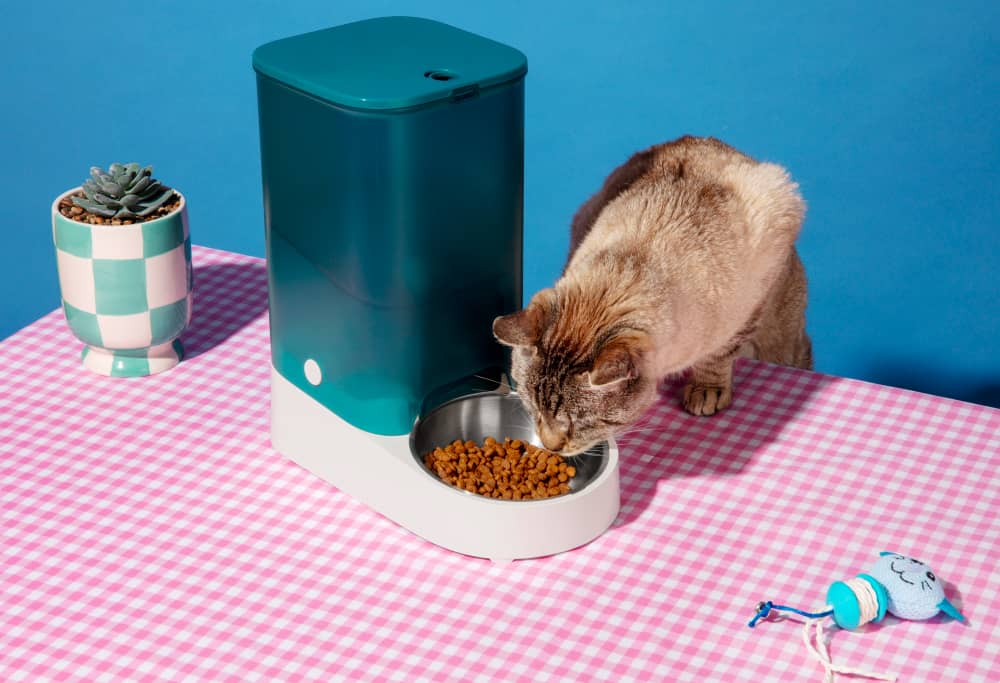
Why Proper Storage of Wet Cat Food is Crucial?
Wet cat food is very popular for its moisturizing effect, its appetizing taste, and the other health benefits it offers. On the other hand, individuals sometimes have a questions regarding this issue by saying, “Is wet cat food leftovers or unopened cans to be refrigerated? The preservation of canned cat food is imperative in order to give it a fresh taste, avoid spoilage, and make the feline not be poisoned.
This guide focuses on all the different aspects of wet cat food refrigerated or preservation, from when to refrigerate, how long it takes, and methods to maintain proper quality. Proper keeping of wet cat food is one of the keys to feline happiness and well-being.
Why Wet Cat Food Is Popular Among Pet Owners?
Wet cat food is the type of food that comes with multiple health benefits, thus gaining the status of a top-of-the-mind option for lots of pet owners. Its soft texture, intense aroma, and high moisture content are the things that match the cat’s natural preferences. When it comes to cats disposed to dehydration, the wet food with an added moisture content may be a tool for reinforcing their hydration. Wet cat food has also the benefit of frequently having recipes with superior quality ingredients, to the delight of even the pickiest cats.
However, the high moisture content causes the food to spoil more quickly. The best storage techniques are the weapons to safeguard not only your cat’s health but also your resourceful purchasing at the same time.
Why Refrigerating Wet Cat Food is Important?
The following reasons make it essential to refrigerate wet cat food after opening.
1. Prevents Bacterial Growth
Opening wet cat food exposes it to air, making it a potential breeding ground for bacteria.Store food in the fridge to delay the process and reduce the risk of foodborne bacterium diseases.
2. Maintains Nutritional Integrity
Storing foods with high moisture content in the refrigerator will nutritionally balance the cat’s diet, and thus, protect the nutrients, vitamins, and minerals. This is because food nutrients may deplete if the food becomes old.
3. Keeps Food Fresh
Cold food will not spoil as quickly, as it will be less smelly and in a softer, more pleasant state that your cat would not want to try out.
How to Store Wet Cat Food Correctly?
Now that we know it is mandatory to refrigerate wet cat food, let us discuss the most efficient storage methods.
1. For Unopened Wet Cat Food
Store unopened wet cat food, whether in cans or pouches, properly to maintain its quality.
- In a power source dry place that does not receive any sunlight or heat.
- A temperature between 50–100°F (10–38°C).
Taking the necessary steps in preservation will protect the can from rusting or the feed from premature spoilage in case it loses its shelf life.
2. For Opened Wet Cat Food
When opened, wet cat food should be:
- If not completely used up, put it in the refrigerator as soon as possible.
- Transferring it to an airtight container or placing on the can a special plastic lid for pet food. This will keep odors and air away from the refrigerators and the product will be safe.
Serving Cold Wet Cat Food
Cats usually abhor eating chilled food. To make food stored in refrigeration more interesting:
- Allow it to remain at room temperature for 10–15 minutes before the serving.
- On the other hand, slightly heat it up with the use of a microwave (when it is in a microwave-safe dish) and do not exceed 10 seconds.
You should always make sure that it is not too hot by checking its temperature first.
Storing Unopened Wet Cat Food: Tips and Tricks
Sealed and untouched wet cat food lasts longer when stored under proper conditions.To ensure its shelf life: You may use these:
Place it in a cool, dry location:Extreme heat weakens cans and may cause them to burst.
Check the expiration date: Use older cans first by rotating your stock.
Prevent unopened cans from freezing: Freezing alters the texture and nutritional quality of the food.
How to Store Opened Wet Cat Food for Maximum Freshness
Of course, opened refrigerated wet cat food is important, but the correct storing becomes equally vital. Here’s how:
Use an airtight container: Evacuate the contents into a food-safe container in order to keep air and odors from tampering.
Wrap it up: When staying in the original can, use plastic wrap, or a silicone lid.
Mark the date: Get the date of opening labeled on the container to monitor the decline in freshness.
Does the Quality of Canned Wet Cat Food Vary With Refrigeration?
Cold storage in the fridge keeps the food fresh; however, there could be a slight textural modification. Pets are more likely to enjoy temperatures nearer the room rather than cold ones. Therefore, the chill edibles need to be slightly heated up before serving. Use the electric kettle or microwave oven on a microwave-safe dish briefly for this purpose.
What Are the Results of Wet Cat Food That Is Not Stored Correctly?
Unsupervised storage ends up in food spoilage, which concludes in:
Bacterial growth: Spoiled food is one of the major problems that develop gastrointestinal problems in a cat.
Nutrient loss: Decline of vitamins and minerals due to air and heat exposure.
Unpleasant odor: Cats are dainty creatures that would go away from a meal if it gets smelly.
Determining illness or perhaps food aversion. Proper storage not only ensures the taste and texture of the cat food but also provides health security has safety from infectious infections or viruses to cats.
Ideal Temperature for Wet Cat Food Storage
Mittens’ mush food belongs on a shelf between 40 and 70 degrees Fahrenheit. Store refrigerated foodstuff at a constant degree of less than 40°F. Fluctuations in temperature are not good for perishables because they accelerate the spoilage process.
How Long Can Wet Cat Food Stay Out Before It Goes Bad?
Wet cat food that has been opened must not be over the limit of 4 hours. Longer than this period when bacteria like Salmonella or E. coli can grow and make the food dangerous to eat.
Signs Wet Cat Food Has Gone Bad
Spoiled cat food is the main factor in the deterioration of the pet’s health.
1. Unpleasant Odor
Spoiled food for the cat has a strong emissions smell that is so bad as to be unbearable.
2. Color or Texture Changes
Spoiled food may turn a darker color, develop a slimy texture, or exhibit signs of mold.
3. Gas Formation
If this can be bulging or the gas is emitted when opened, it is an indication of spoilage.
4. Refusal to Eat
Cats usually refuse to eat spoiled food because it smells or tastes strange, which is a sign that it is unsafe to eat.
If you detect any of these indicators, throw the food away right away.
Does Freezing Wet Cat Food Work?
Sticking to freezing is one way if you need long-term storage.
Putting wet cat food into the freezer may help it rest longer than in the fridge although it is not always the best.
- Pros: The freezing had helped it to stay unused for six months without spoilage.
- Cons: The texture and flavor can be changed after thawing, thus, it might be less attractive to your cat.
How to Freeze Wet Cat Food?
- Divide the food into single-serving portions before freezing.
- Store portions in freezer-safe, airtight containers or bags.
Thawing Tips:
- Thaw in the refrigerator overnight.
- Avoid refreezing once thawed, as it can compromise the food’s quality.
Comparing Wet and Dry Cat Food Storage
Understanding the differences in storage needs between wet and dry cat food helps you manage both effectively.
| Feature | Wet Cat Food | Dry Cat Food |
| Shelf Life | 1–2 years (unopened) | Up to 12 months |
| Opened Storage | Refrigerate leftovers for 3–5 days | Store in a cool, dry place |
| Portion Control | Often served in smaller portions | Larger portions can be left out longer |
| Spoilage Risk | Higher due to moisture content | Lower; less prone to bacterial growth |
While wet food requires more care in storage, its moisture content makes it a preferred option for many cats, particularly those with hydration issues.
Transitioning Refrigerated Food to Room Temperature for Feeding
Cats like it better when their food is slightly warmer than their natural prey. To heat up cold food:
Taking out for a short period: You may wait until 10-15 minutes have passed before you serve it.
Add warm water: Tinkle a splash of warm water in with it and mix around to make the food more exciting.
Alternative Wet Cat Food Storage Options
In cases where refrigeration is not available, you can choose the following alternatives:
Cooler with ice packs: Ideal storage option for the time when you are out on duty or on a short-term trip.
Vacuum-sealed bags: More air is pushed out, the Development of which increases the chance of selection.
Common Mistakes to Avoid When Storing Wet Cat Food
Beware of these cock-ups:
Leaving food uncovered: Be considerate always to have the cover or lid on it.
Storing near strong odors: Damp food smells can cause or get partly the smells of others.
Freezing and thawing repeatedly: This may affect food quality in the long run.
Comparing Storage Practices: Wet vs. Dry Cat Food
Refrigerate liquid foods after opening, while store inert material foods at room temperature in tightly sealed packages.One kind is the perishable type that requires more care and handling. Feeding food that keeps the cat healthy is one of the primary advantages of such varying types.
Best Practices for Storing Wet Cat Food
These tricks will help you to keep your wet cat food fresh and safe.
- Use a Plastic Can Lid: These lids are durable and keep the cans closed, thus preventing air contact.
- Label with dates:Write the date when opening the can to keep track of how long it has been stored.
- Avoid mixing dry and wet food: Leftovers can spoil quickly if they are not consumed immediately.
- Check Expiration Dates: Always make sure that wet cat food is in accordance with its expiration date while serving it.
- Purchase smaller portions: Single-serve cans or pouches reduce waste and eliminate the need for refrigeration.
Final Thoughts: Prioritizing Your Cat’s Health
Storage of wet cat food is of incredible importance in your cat’s health and happiness. By using these tips, you make sure that your pet has the tastiest and safest meals all the time.
Conclusion: Keep Your Cat’s Food Safe and Fresh
Enclosing guidelines such as using airtight containers and checking their freshness regularly will allow you to give your cat safe and tasty meals at every time.
Remember, your cat’s good health starts from the right nutrition—and the rightness of nutrition originates from the way you store their food. Raise always freshness – therefore, it should be an alternative in times of doubt while being in a good state is not questionable at all. For personalized recommendations, consult your veterinarian.
FAQ
1. Can I freeze wet cat food for longer storage?
Be careful about the texture, freezing your cover makes the food uneven. Always defrost it in the fridge and serve cold.
2. How long does wet cat food last in the refrigerator?
If we have to talk about the cars staying in the Motherland due to the use of winter clothes, up to 3–5 days are tickets to the airplane floor.
3. Should I refrigerate leftover food from my cat’s bowl?
No. Throw away any that have been used up for more than 4 hours.
4. What containers are best for storing opened wet cat food?
Sealed and food safety containers are very effective for keeping your food fresh.
5. Why does my cat refuse refrigerated wet food?
Cold food cannot be understood. Hot it a little is the easier way to make it more tasteful.
6. How do I know if wet cat food is still good?
Examine any unpleasant odor, color changes, or due to the visible mold. If there is a doubt, it would be safer to throw it away.
7. Is it okay to serve cold wet cat food?
Most cats, though, love their food if it is near room temperature. Therefore, Lukewarm food is preferred to refrigerated food being served.
8. Can I store leftover wet cat food in the can?
Instead of this, it is better to put the rest in a makeshift airtight container to break the infection chain and be sure it will stay fresh.

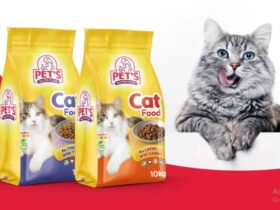
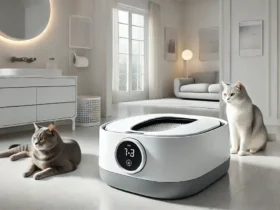
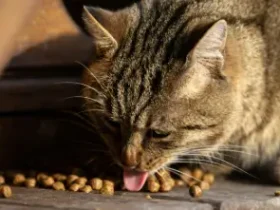
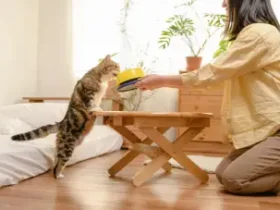
Leave a Reply